
By Joseph Hough
Towards the Passive House: A short history of energy-efficient housing in Canada (Part 3 of 5)
Canadian ContractorA look at the Daley House in Okotoks, Alberta and the Putz House in Regina, Saskatchewan. Plus: Stich Consulting and Design, Invermere, B.C.
This is Part 3 of Joseph Hough’s 5 part series on how the Passive House arrived in Canada.
In this part, Hough looks at a couple of modern day case studies of Passive House construction in Canada – and discusses the influence of some important Passive House educators.
The Daley House, Okotoks, Alberta
In our first case study, we look at a modern day Passive House built in Okotoks, Alberta in 2016, designed and built by Sheri and Scott Daley. What makes their home even more notable is that the Daley’s didn’t simply opt to build their home as a Passive House — they also chose to use cross-laminated timber (CLT). CLTs were invented in the 1970s, and are manufactured from between three to seven layers of wood stacked at right angles to each other.
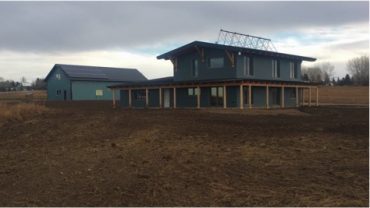
Daley Passive House, Okotoks, Alberta.
Sheri and Scott Daley looked at both Canadian and German CLT samples. “We compared the Canadian CLT with its German counterpart, however the Canadian product had many gaps in between its layers,” Sheri said. As a result, they selected the German product.
The Daleys built their home themselves. “Some people would say that the house was prefabricated and therefore had higher quality control,” said Sheri. “However, I find the word ‘prefabricated’ unsettling. The house was custom-made, that’s true, but it took us nine months to design it and 18 months to build it, piece by piece. The only mechanical help we got was a zoom-boom to lift the walls.”
Obtaining back financing for an off-the-grid Passive House was difficult, even more so given that a substantial part of the structure came from Germany. “The Vice President of the bank came and had a look at our Passive House,” said Sheri. “The trick was to demonstrate that we had a solid project going on.”
A bigger challenge for the Daleys, however, was what they called the “conventional mentality” of the trades. In a Passive House, air tightness is one of the main criteria. A Passive House must show an ach50 (air changes per hour) equal to or less than 0.6. “We found that all of the trades took extra time and material to deal with the constraints of an air tight envelope,” said Sheri.
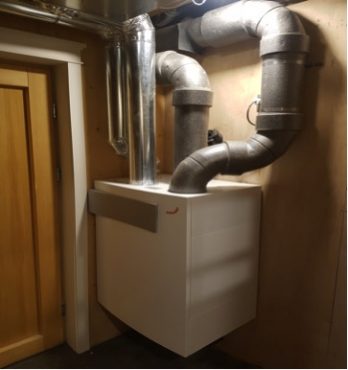
The Daleys’ Zehnder HRV system
In terms of the heat recovery system (HRV), Sheri explained, “We hired a mechanical engineer to design the heating system. We’re off-grid and our HRV had to adapt to this condition. The house itself is very comfortable. The heat produced from our bodies and from the kitchen heats the house. The thing is, the HRV must be precise so that no over- heating or under-heating takes place.” They are tweaking the system, as they go. “The goal is to have more manual control over the system so that it meets our actual energy needs,” said Sheri.
The Daley’s have succeeded at living off-grid. How did the Daley’s set up their system? First, Scott is an electrician and an owner of Ideal Electric and Controls Inc. — He designed and installed all the electrical work and didn’t need to pay the utility company to extend service to their home. Second, the majority of energy in the Daley’s’ house is generated from thirty 260 Watt solar panels manufactured by Canadian Solar Inc.. The PV array generates electricity and the solar thermal system provides hot water. There is an 11kW Generac propane generator to recharge the batteries in case of any emergency. In practice, they have found that they are using less energy than they expected.
I visited Scott and inquired about his off-the-grid system. “Solar has always interested me, so I started doing some research, visited solar system distributors, and bought a few components to put together a small system to learn from. I used this temporary system to feed our trailer and for construction power throughout the building process,” he told me. The temporary system consisted of a Magnum 4448PAE inverter, Midnight Classic 150 charge controller, four 250 Watt Jinko Solar panels, eight 6V Trojan (Golf Cart) batteries. In addition, a used panel system was integrated into this temporary system.
Scott scaled up this design and put a 7.8 kW array on the shop roof with 3 parallel inverters and a large bank of 24 rechargeable deep cycle batteries. This system has proven amazing, providing power for both his large shop and the whole home. “My company, Ideal Electric and Controls Inc., now installs and upgrades solar panel systems for many clients,” said Scott.
“Winter is really the only season that I have to watch the batteries to ensure they do not get to low,” continued Scott. “Without compromising our energy consumption, the system will run the house for three to four days without any sun to recharge. I keep an eye on the weather forecast. We avoid doing laundry and using the stove if the weather is inclement for charging the batteries, and use the Generac propane generator instead. Living with an off-the- grid system is doable. I can relate to and talk about my real life experiences with my solar customers. I’ve seen it come to fruition. I hear many people say that it is not possible to live off-grid and have an electric range and dryer, but my experience proves otherwise.”
Scott believes taking a conventional house off-the-grid can prove to be very difficult, however. Success requires starting from the ground up by building the most efficient house envelope possible. In Scott’s opinion, that leads to the Passive House .
Finally, the Daley’s are proud their roof and its air tightness. Sheri explained the details of roof structure, saying, “The CLT of the ceiling is covered by insulation, then wood fiber board on top. Then there is the air-vapour barrier with airspace between the battens and counter battens and finally, the sheet metal roof. This is all sealed, taped, and airtight. This system is 20.5″ thick and has an R-value of 60.”
Sheri compares this to a conventional attic space. “A normal attic space would be formed of drywall, then insulation, followed by sheathing and air-vapour barrier, and then roofing. However, this lacks the air tightness to keep the heat inside the house, and therefore requires constant additional heat throughout winter.”
Stich Consulting and Design, Invermere, BC
Stich Consulting and Design is the brainchild of Jasminka and Tomaz Stich. Tomaz is a trained engineer as well as a licensed carpenter. Jasmine presides over education, marketing and bookkeeping. Since their arrival in Canada from Germany in 2009, the Stiches have helped take the Passive House to new levels across their adopted country. They have designed and built Passive Houses in Quebec, Ontario and Alberta as well as in their native B.C..
Jasminka believes that a Passive House will remain an enigma until one has experienced it. “The comfort offered by a Passive House is unparalleled,” she says. “You have to experience it yourself to know what a Passive House really is. We have done it in residential as well as commercial settings. For instance, one of our major commercial renovations was the warehouse of Hermann Timbre-Frame Homes in Ontario.”
The Stiches organize yearly tours of Passive Houses. Besides teaching the official certified passive house courses at The Canadian Passive House Institute to professionals and pro contractors, Jasminka and Tomaz dedicate the time and effort to teach the same concepts to homeowners as well.
According to the Stiches, there are two challenges facing Passive Houses in North America: knowledge and products.
There is still the widespread belief among professionals (and tradespeople) that conventional, unsustainable methods of building can go on forever. “This is not true,” says Jasminka. “We are having limited resources with ever-increasing energy prices. Thus, spreading [this] knowledge among all building professionals is a must.”
“In the Netherlands,” Jasminka continued, “there are specific Passive House courses targeted to specific professionals. For instance, the designers have special Passive House design courses, the engineers have specific Passive House engineering courses, the tradespeople have hands-on custom-tailored courses, etc. This helps raise the bar in every aspect related to building, including products. [But in Canada] a lack of knowledge [contributes to] bankers’ unwillingness to finance green building. In the same vein, it’s difficult to convince the inspector or the insurance broker to accept or insure Passive Houses. Lack of knowledge is ubiquitous and it is responsible for the uphill fight against the conventional environmentally-unfriendly methods of building.”
The Stiches lament the state of Passive House-certified products in North America. “The windows produced in Europe are cutting-edge products,” Jasminka said. “If you want one-sided or double-sided wooden windows, you can easily find them. If you want aluminum or plastic or wood or a combination of all these, you can find them. Not to mention that you can find all the colors you need. [This range of products] is not readily available in Canada.”
Jasmine says that, when the couple show their clients samples of building products made in Europe and those made in Canada, and ask them to choose, invariably the clients opt for the European products. North America is yet to catch up with the European quality, she believes.
Also, there is a strong culture of prefabrication in Europe. “Prefabrication offers an excellent chance to build with efficiency,” says Tomaz. “You’re proceeding in a step-by-step manner in a controlled environment, where no weather intervenes and nothing is hidden. Everything in a prefabricated house could easily be inspected before delivery. Once delivered, it is assembled in a systemic way.”For the Stiches, prefabricated houses are much cheaper and faster to assemble. The only costly affair may be transportation. But still prefabrication offers many advantages over conventional building.
Piller & Putz Construction, Regina, Saskatchewan
Adam Putz, Piller & Putz Construction is a consummate building professional. He says he wanted to build a Passive House from the beginning, but his Passive House ended up being a net zero house using Passive House principles.
Adam describes his “strategy” in these simple words: “My goal was to build a family home for myself, my wife, my two kids and the dog. We wanted a house that is energy efficient, comfortable and a good investment. I also wanted it to be an example of how homes should be built in our climate in Saskatchewan. It had to be built with durable products that were relatively low maintenance, so we could spend more time enjoying the outdoors than maintaining our home.”
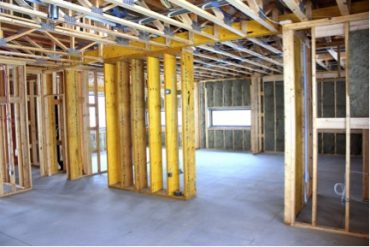
Interior of Adam Putz’s house in Regina
And Adam has what it takes to build such a house. “I always worked in construction,” he said. “After graduation, I worked as geologist, but soon decided to start my company with my cousin Luke Piller. If I take care of the construction side, Luke takes care of the marketing side. Both of us manage our projects and work on the tools whenever possible.”
Adam was always aware of the Saskatchewan Conservation House, which – as mentioned in Part 2- was built in Regina. “I opted to build a Passive House,” he said. “I did an extensive research on that and decided to go for the Passive House courses. The courses were practical and informative.”
However, the courses proved to be different somehow from reality for Adam. Because of the high cost of insulation, Adam decided to try his own approach, which would fit nicely with his own budget. “The creative builder will always find a way,” he said. “Quality is never cheap, but there is always an alternative for a good product at a more reasonable price.”
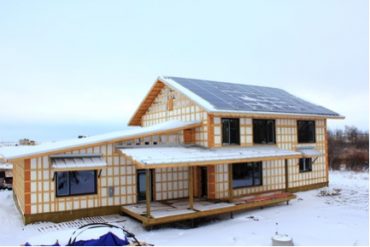
Adam Putz’s house exterior
Adam opted for a simple design: modern farmhouse in the exterior and midcentury modern style in the interior. Some unique features were incorporated into his new house. These features include the southern orientation of windows with a roof overhang of 4-feet past the south windows, German triple-glazed windows (Aluplast Energetic) and a Polish overhanging garage door (Krispol) with double seal for more airtightness.
Adam described his approach to the windows and doors: “I was approached by Neuluxe Windows and Doors to use their products. I was happy to support a Saskatchewan business and they have a very good customer service. The windows were about $21,000. They are very competitive with quality windows sourced locally. The exterior doors cost me about $7,000. The garage overhead door was about $5,000 without any openers. I’ve to admit, these doors are very impressive. There was no door I could source in North America with the same level of performance. These doors are a necessity if you plan to heat your garage space.”
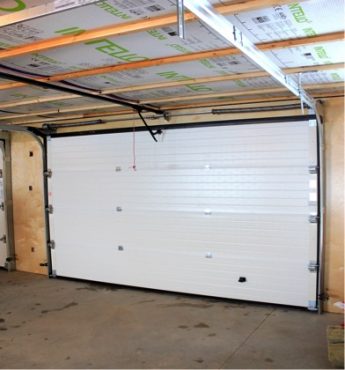
Krispol garage door
When it comes to heating, Adam uses a radiant heating panels to heat his house. “The heating panels are very cheap and simple to meet our heat demand. Also, they don’t cost too much to maintain. I’ve the radiant heating panels in my garage too; however the garage is also traditionally-heated. The cost of heating the garage will be offset by the solar panels. When it gets down to -40 Celsius in winter, heating the garage to park my car is a luxury I am willing to pay for.”
Adam’s house is powered with a 16kW SolarEdge solar system. He receives a rebate of 20 per cent of all costs incurred in installing this system from Saskpower (the main electricity supplier in Saskatchewan). The name of this rebate program is “Net Metering Program.” Also, this program includes electricity “banking.” If Adam generates 100 kWh of electrical power per month, and uses 70 kWh, the 30 kWh left will be “banked” cumulatively for Adam to use within one year.
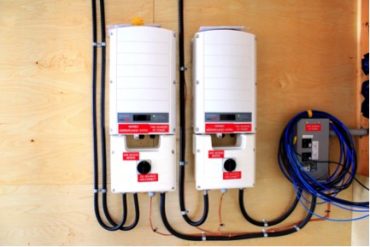
Solar Edge system
I asked Adam about his “miracle” ceiling that was built to an R-value of 95. “It is not rocket science,” Adam said. “I know that a major portion of heat escapes through the ceiling. The design of my ceiling is simple. My roof trusses have a 20″ raised heel. I used Intello Plus membrane as an interior air/vapor barrier. The membrane was strapped with 2x2s. Next, blown cellulose was added. I also avoided all ceiling penetrations, with the exception of low profile LED spot lights.”
In the same vein, the wall Adam built was simple in its structure: a 2×6 wall covered with a 5/8″ plywood taped at the seams. Then, 8″ of Expanded Polystyrene (EPS) strapped vertically and horizontally with 1x4s was added. The wall cavities were insulated with fibreglass batts.
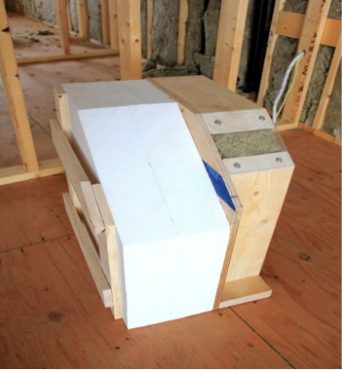
Sample of Adam Putz’s wall structure
I asked Adam to share some of the his most important tips for designing and building extremely energy-efficient housing. There are four…
1) “Choose a wall design that allows for robust and simple air sealing, as well as, foundation design. Using a split wall design (i.e. a wall built with two different materials) is a fantastic option. Double-stud walls are also an effective way to build a high performance wall. However, they can be more difficult to air-seal if there is an absence of service cavity. Harold Orr’s “Prairie Passive Wall” is a great double-stud wall, but it requires a very hands-on approach when working with the framer.”
2) “Design a simple shape, and add details to the home with landscaping, siding, and exterior finishing. There seems to be a trend to build homes with complex rooflines and complicated footprints. All these things add cost by way of material and labour, and greatly reduce energy efficiency. There is something beautiful about a simple design that represents efficiency.”
3) “Do not over-design the heating and cooling system. When designing the system, look at upfront cost, as well as, maintenance costs. We kept our system simple. It has low upfront cost and little ongoing maintenance costs. If you want to offset the extra budget that was spent on insulation, you have to keep the mechanical design simple. This is what Passive House design is based on. There is an inflection point based on the mechanicals and amount of insulation.”
4) “Most importantly, you have to run the numbers and see what makes sense for your climate. Do not get hung up on Passive House, net zero, or any specific program. You have to design a house that makes sense for your family, your energy goals, your environment and your long term investment.”
If you wish to reach author Joseph Hough directly, please email, efficientcarpenter@gmail.com.

Leave a Reply